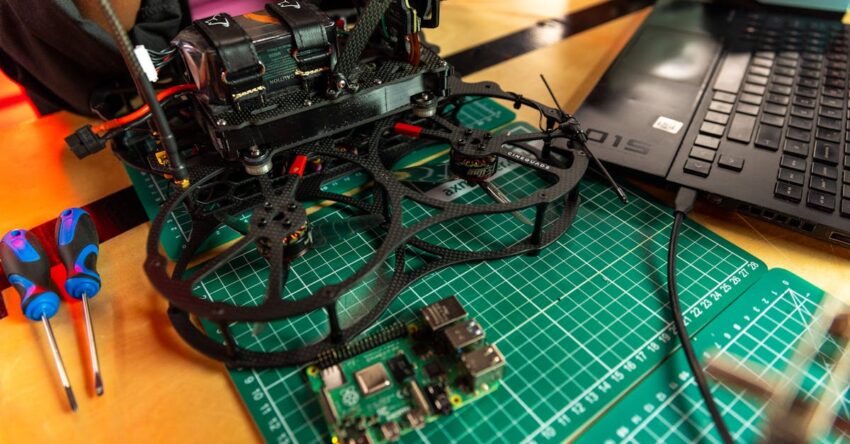Are you making mistakes with your DIY voice control projects that could be holding you back? Imagine turning your living room lights on with just a voice command or starting your coffee maker from your bed. These simple pleasures of DIY home automation are within your reach. However, common pitfalls with voice-controlled devices might lead to frustration instead of convenience.
Understanding the crucial role of smart home voice assistants in your setup can streamline your intelligent home automation. But how do you integrate smart speakers effectively without stumbling into common errors? It’s not just about buying the latest gadgets; it’s about knowing how to make them work seamlessly with your DIY smart home setups. Curious about how noise impacts voice recognition or how to use modules like the ESP8266 effectively? These are vital pieces of the voice control puzzle.
Discover how to transform your home with voice command systems and avoid the typical DIY home automation mistakes. Dive in and unlock the full potential of voice control technology for your smart home. Let’s explore the smarter way to automate your life!

Photo provided by ThisIsEngineering on Pexels
Avoid Overcomplicating Setup
You might be excited to dive into DIY voice control, but it’s best to keep things simple at first. Trying to do too much at once can lead to headaches. Instead, try to choose straightforward projects that you can handle easily. Start small and build from there.
- Choose straightforward home automation projects.
- Start with easy voice-controlled devices.
- Integrate smart speakers first for ease.
When you are just starting, it’s a good idea to integrate smart speakers first for ease. They are simple and often come with built-in voice assistants that will make your setup easier.
Choose Compatible Smart Home Devices
Picking the right devices is crucial for a smooth DIY voice control setup. You will want to ensure that your smart home devices are compatible with the technology you want to use. This means matching your smart home voice assistants with other devices in your home.
- Match smart home voice assistants with devices.
- Research home voice command systems.
- Test intelligent home automation setups.
Take some time to research home voice command systems to find out which ones work best for your needs. Testing different setups can also help you understand how everything works together. Don’t forget to look into intelligent home automation options that can make everything run smoother.
DIY Voice Control: Testing and Maintenance
Regular Testing of Voice Commands
Testing your DIY voice control setup is vital to ensure everything works reliably. You don’t want a system that only works half the time. Make sure to verify the smart speakers integration regularly to catch any issues early.
- Verify smart speakers integration regularly.
- Check responsiveness of all devices.
- Update software for better performance.
Checking the responsiveness of all devices is important. Sometimes, updates are needed to make sure everything communicates well. Keeping your software updated helps maintain performance and reduces the chance of errors.
Maintain System for Consistency
Maintenance of your DIY smart home setups is just as important as setting them up. Regular checks help keep everything running smoothly. Schedule these checks to save yourself from future complications.
- Schedule regular maintenance checks.
- Monitor home automation trends for updates.
- Adjust settings as technology evolves.
Monitoring home automation with voice trends ensures that you are not left behind as new tech emerges. As your setup ages, adjusting settings might be necessary to adapt to new technologies. Stay informed to keep your home running efficiently.
Avoid Common Voice Control Pitfalls
Mastering voice-controlled devices can transform your home environment. You gain convenience, comfort, and the thrill of controlling your smart home with ease. By learning to spot and fix common mistakes, like microphone placement or software updates, you ensure your systems work flawlessly. Improving your DIY home setup leads to a smoother experience and greater enjoyment of your smart home features.
Now, it’s time to take action. Start by revisiting your current home voice command systems. Check that your smart speakers and voice recognition shields are in optimal locations to reduce noise interference. Next, keep your software up-to-date to ensure compatibility with the latest smart home voice assistants and voice control technology. These simple steps can make a significant difference in how effectively your system functions.
Embrace the potential of your intelligent home automation journey. Take a moment today to make those adjustments, and you’ll see immediate improvements. Dive into your DIY projects with confidence and enjoy a smarter, more connected home life. You’ve got this!
